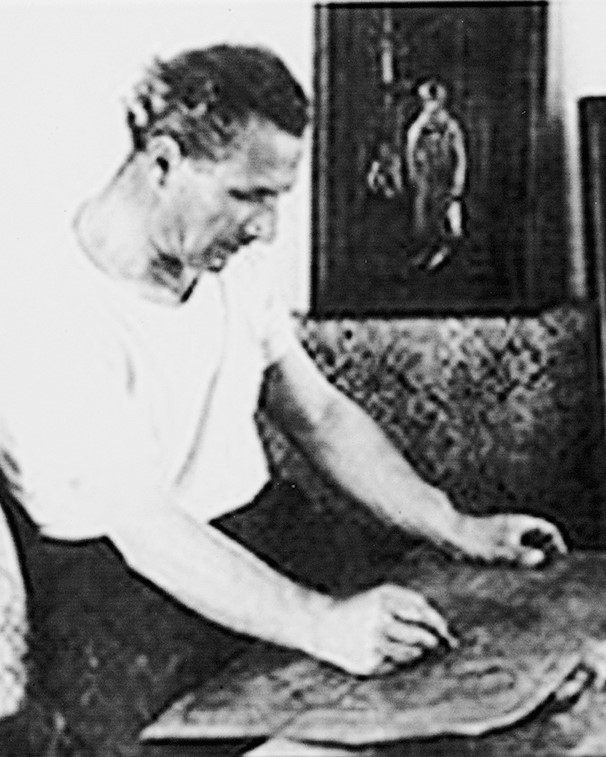Jacques LOUTCHANSKY
Январь 5, 2019Oscar MIESTCHANINOFF
Январь 5, 2019Арий МеРЦеР
ВАРШАВА 1905 – ЦФАТ (ИЗРАИЛЬ) 1966
Арий Мерцер родился в семье хасидов. С юных лет мир искусства притягивал его, но семья была против. В 15 лет он уехал от родителей. Посвятил себя барельефу — технике, идущей из библейских времён. В 1927 году получил диплом Школы изящных искусств Варшавы и стал учеником профессора Адама Рихтарского. Мерцер впервые выставил свои работы в Варшаве в 1928 году. В 1930 году он приехал в Париж. Регулярно выставлял свои скульптуры на Осеннем салоне и Салоне в Тюильри. Специализировался на чеканной меди. Представлял в скульптуре историю и дух евреев в библейские времена и их жизнь в штетле. Также работал по сереб- ру и золоту.
В 1943 году после пребывания в Сен- Жерве он присоединился к движению Сопротивления, добрался до Швейцарии. Швейцарские власти поместили его в рабо- чий лагерь, затем разрешили поселиться в Женеве. Он зарабатывал на жизнь эски- зами. Вся его семья сгинула в лагерях. Единственный выживший, Мерцер поклял- ся в своём творчестве чтить память всех погибших. В 1945 году иммигрировал в Израиль и поселился в Цфате, известном художе- ственном поселке в Галилее. Выставлял свои работы в Иерусалиме, Тель-Авиве, Хайфе. В 1946 году получил премию Херманна- Струка и премию Дизенгофа в 1951 и 1954 годах.
Stories of Jewish Artists of the School of Paris 1905-1939
FRENCH-ENGLISH
Capitale des arts, le Paris des années 1905-1939 attire les artistes du monde entier. De cette période de foisonnement, un terme est resté, celui d'Ecole de Paris, qui recouvre une grande diversité d'expression artistique. Dans ce brassage dont Montparnasse est le creuset, un groupe se distingue : celui des artistes juifs venus de Russie, de Pologne et d'Europe centrale. Si leurs styles sont variés, un destin commun les rassemble : ils fuient l'antisémitisme de leur pays d'origine. Certains ont connu la célébrité dès les années 1920, tels Soutine, Lipchitz ou Chagall. D'autres n'ont pas eu le temps ou la chance d'y accéder. Près de la moitié a péri dans les camps de concentration nazis.
From 1905 to 1939, Paris attracted artists from all over the globe as the capital of the art world. This period of artistic proliferation became known as the School of Paris, and includes a great diversity of artistic expression. Within the teeming art world centred on Montparnasse, one group set itself apart: Jewish artists from Russia, Poland, and Central Europe. Although their styles were diverse, they shared the common fate of fleeing anti-Semitic persecutions in their home countries. Some became famous in the 1920s, such as Soutine, Lipchitz, and Chagall, while others did not have the time or the luck to gain renown. Nearly half of these artists died in Nazi concentration camps.





